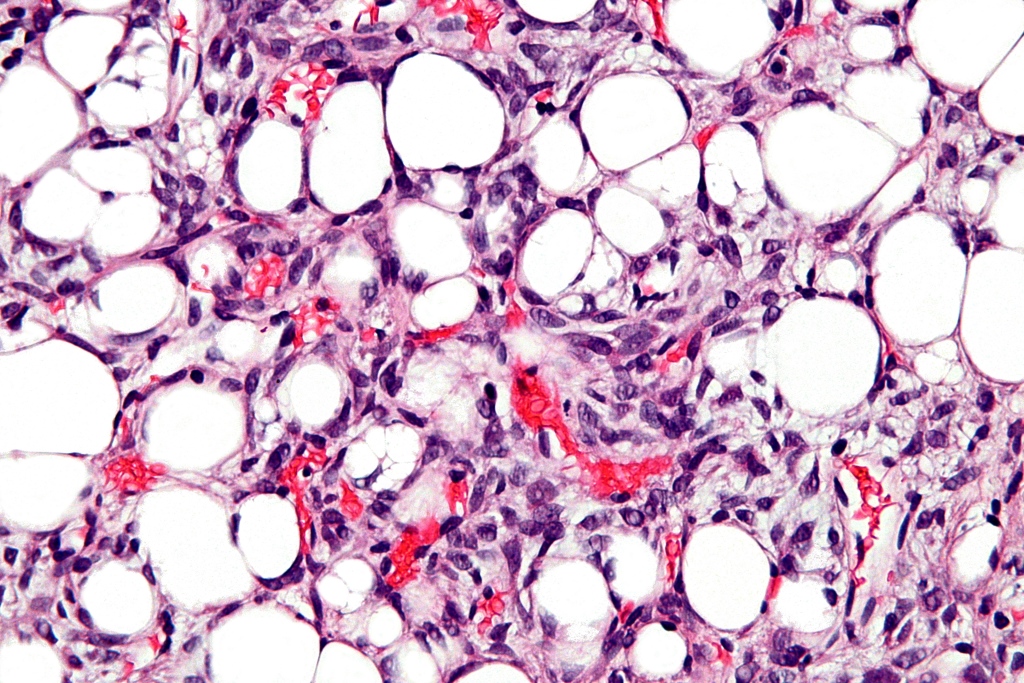Liposarcoma biopsy
Jump to navigation
Jump to search
|
Liposarcoma Microchapters |
|
Diagnosis |
|---|
|
Treatment |
|
Case Studies |
|
Liposarcoma biopsy On the Web |
|
American Roentgen Ray Society Images of Liposarcoma biopsy |
Editor-In-Chief: C. Michael Gibson, M.S., M.D. [1]
Overview
The definitive diagnosis of liposarcoma is made by biopsy, which also provides histopathological classification of the liposarcoma's subtype.
Biopsy
Although imaging may be helpful in the diagnosis of liposarcoma, the optimal method for diagnosis of liposarcoma is by biopsy. A biopsy also provides important histopathological information requires to identify the subtype of the liposarcoma.
| Subtype | Findings |
|---|---|
| Atypical Lipomatous Neoplasm (ALN)/Well-Differentiated Liposarcoma (WDL) | 4 subtypes:
Multivacuolated lipoblasts and spindle cells with hyperchromatic nuclei are often observed. |
| De-differentiated Liposarcoma | Abrupt transition from a low-grade to a high-grade differentiation within the same mass of a well-differentiated liposarcoma. |
| Myxoid liposarcoma | Multinodular mass with round cells and hyaluronic acid matrix. High cellularity at the periphery and low cellularity at the center of the mass. Mitotic activity is normal and the nuclei are normochromatic. |
| Pleomorphic liposarcoma | Pleomorphic lipoblasts with hyperchromatic nuclei, acidophilic cytoplasm, and eosinophilic hyaline globules. Spindle cells and multinucleated giant cells may be observed. |
| Mixed-type Liposarcoma | Mixed features of myxoid, pleomorphic, and well-differentiated liposarcoma. |
| Table adapted from Fletcher CDM, Unni KK, Mertens F, eds. World Health Organization Classification of Tumours. Pathology and Genetics of Tumours of Soft Tissue and Bone. Geneva:IARC Press; 2002[1] and Enzinger and Weiss's Soft Tissue Tumors , 6th Edition [2] | |
References
- ↑ Fletcher, Christopher (2002). Pathology and genetics of tumours of soft tissue and bone. Lyon: IARC Press. ISBN 9283224132.
- ↑ Goldblum, John (2014). Enzinger and Weiss's soft tissue tumors. Philadelphia, PA: Saunders/Elsevier. ISBN 978-0-323-08834-3.




